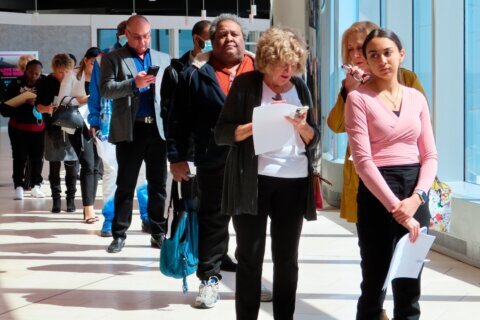WASHINGTON — There is no shortage of financial apps for smartphones, which fall under the broad category of “fintech,” and most of us are using them.
“Sixty-three percent of us have at least one, and the majority of those are bank apps — Chase, Bank of America, your local community bank,” Robert Barba at Bankrate.com told WTOP.
The average smartphone user has 2 1/2 financial apps. Among consumers ages 18 to 37, the average is 3.6 fintech apps.
Bank apps are the most common, followed by peer-to-peer payment apps, such as Square and PayPal. But the fastest-growing category of fintech apps are budgeting apps.
“People are really interested in understanding their money. It’s a very hot topic in finance. There is a lot of interest in making sure people understand how their money is being spent,” Barba said.
“The thing that they offer is aggregation. The ability to look at all of your financial relationships in one, solid place,” he said.
Mint, Clarity Money and Wally are among the best-known budgeting apps. Stash, Acorns and Betterment are popular for investing.
People with banking apps are the most engaged, with 70 percent who have them reporting they use them at least once a week.
Fintech apps are popular, but they aren’t universally embraced.
“Consumers who avoid mobile banking tend to fall into two camps: people who like their routine and people who are afraid of fraud,” Barba said.
Despite the inherent risk of fraud, Bankrate said the smartphone platform gives banks and other financial apps more tools to verify that you are you.
Bankrate commissioned YouGov to conduct the survey of about 1,200 consumers between Jan. 25 and 26.








